Westside Toastmasters is located in West Los Angeles and Santa Monica, California
Chapter 13
THE MEANING BEHIND PERSONAL ACCESSORIES
How to Read Glasses
Almost every artificial aid a person uses gives them an opportunity to perform a number of revealing gestures and this is certainly the case with those who wear glasses. One of the most common gestures is placing one arm of the frame in the mouth.
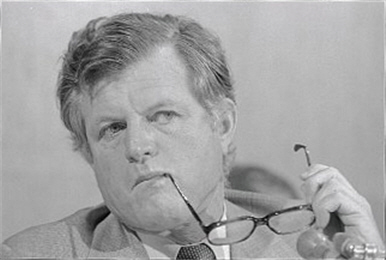
Using the glasses to stall for time
As Desmond Morris pointed out, the act of putting objects against the lips or in the mouth is a momentary attempt by the person to relive the security he experienced as a baby at his mother's breast. This means that the Glasses-Arm-in-Mouth gesture is essentially a reassurance gesture.
If you wear glasses you may sometimes feel as if you are looking at life through two toilet paper rolls, but you are perceived by others as being more studious and intelligent, particularly in the early stages of a meeting. In one study, people pictured wearing glasses were judged by respondents as being 14 IQ points more intelligent compared to when they were not wearing them. This effect lasted less than five minutes, however, so you would be wise to consider wearing them only for short interviews.
The 'intelligent' look is reduced, however, if you wear glasses with oversized lenses, Elton John-style colored frames or designer glasses with distracting initials on the frame. Wearing glasses that are one size larger than the face can make younger people look older, more studious and more authoritative.


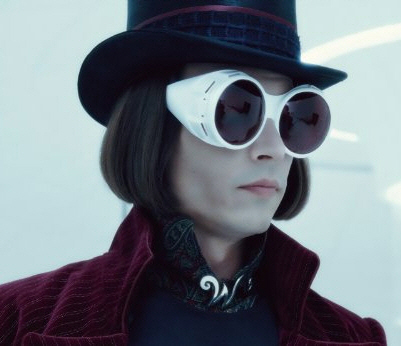
Solid frame glasses can make you look more sincere and intelligent; over-the-top frames don't
In a study using pictures of people's faces, analysts found that when you add glasses to a face in a business context, respondents describe that person as studious, intelligent, conservative, educated and sincere. The heavier the frame on the glasses the more frequently these descriptions were likely to be used and it made little difference whether the face was male or female. This could be because the leaders of business who wear glasses use heavier frames. So in a business environment, glasses are a statement of power. Frameless, small or spindly frames convey a powerless image and say that you are more interested in fashion than business. The reverse holds true in social contexts but in these situations you are selling yourself as a friend or mate. People in positions of power are advised to wear stronger frames to make serious points, such as reading a financial budget, and frameless styles when conveying a 'nice guy' image or being 'one of the boys'.
Stalling Tactics
As with cigarette smoking, the Glasses-Arm-in-Mouth action can be used to stall or delay a decision. In negotiating, it has. been found that this gesture appears most frequently at the close when the person has been asked for a decision. Continually taking the glasses off and cleaning the lenses is another method used by glasses wearers to gain time for a decision. When this gesture is seen immediately after a decision has been asked for, silence is the best tactic.
The gestures that follow Glasses-Arm-in-Mouth signal the person's intention and allow an alert negotiator to respond accordingly. For example, if the person puts the glasses back on, this often means that he wants to 'see' the facts again. Folding the glasses and putting them away signals an intention to terminate the conversation and throwing the glasses onto the desk is symbolically rejecting the proposal.
Peering-Over-the-Glasses
Actors in films made during the 1920s and 1930s used Peering-Over-the-Glasses to portray, for example, a critical or judgemental person such as a teacher in an English public school. Often the person would be wearing reading glasses and find it more convenient to look over the tops, rather than removing them to look at the other person. But whoever is on the receiving end of this look may feel as though he is being judged or scrutinized. The habit of looking over the glasses can be a very costly mistake because the listener may respond to this look with negatives such as folded arms, crossed legs or an argumentative attitude. If you wear glasses, remove them when speaking and put them back on to listen. This not only relaxes the other person, but allows you to have control of the conversation. The listener quickly becomes conditioned that when you take your glasses off, you're taking the floor, and when you put them back on, it's his turn to talk.
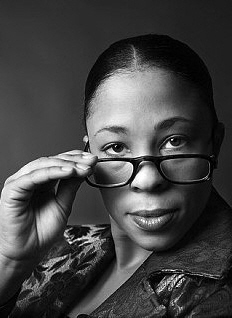
Peering over one's glasses can intimidate
Contact lenses can make your pupils appear dilated and moist and can also reflect lights. This can give you a softer, more sensual appearance, which is fine for social contexts but can be disastrous in business, especially for women. A woman can find herself trying her best to persuade a businessman to buy her ideas while he is mesmerized by the sensual effect of her contact lenses and doesn't hear a word she says.
Tinted glasses and sunglasses are never acceptable in business contexts and arouse suspicions in social environments. When you want to convey that you see things clearly and precisely you must have clear glass in the frames - keep sunglasses and tinted lenses for outdoors.
Wearing Glasses on the Head
People who wear dark sunglasses during meetings are seen as suspicious, secretive and insecure while those who wear them on their head are perceived to be relaxed, youthful and 'cool' - just back from Club Med, in fact. This is because they give the wearer the appearance that they have two huge eyes with dilated pupils on the top of their head; this mimics the nonthreatening effect that babies and cuddly toys with painted large pupils have on us.

Creating the 'Four Eyes' effect of dilated pupils
The Power of Glasses and Make-up
Wearing make-up definitely adds to perceived credibility, especially for women in business. To demonstrate this a simple experiment was conducted with a business partner where four similar looking female assistants were hired to help sell relevant products at a business seminar. Each woman was given her own separate table and all were dressed in similar clothing. One assistant wore glasses and make-up, the second wore glasses and no make-up, the third had make-up and no glasses and the fourth had neither make-up nor glasses. Customers would approach the table and talk with the assistants about the programs, spending an average discussion time of between four and six minutes. When the customers left the tables they were asked to recall information about each woman's personality and appearance and to choose adjectives from a list that best described each woman. The woman wearing both makeup and glasses was described as confident, intelligent, sophisticated and the most outgoing. Some female customers saw her as confident but also cold, arrogant and/or conceited - indicating they may have seen her as a possible competitor, because the men never saw her this way. The assistant who wore make-up and no glasses received good ratings on appearance and personal presentation but lower on personal skills such as listening and building rapport.
Wearing make-up definitely adds to a woman's perceived self-confidence.
The assistants who wore no make-up were rated worst on personal skills and personal presentation and wearing glasses without make-up made little difference to the customers' attitudes and recall. Most female customers had noted when make-up was not being worn by the assistant while most men could not recall whether she wore it or not. Interestingly, both women who wore make-up were thought to be wearing shorter skirts than those without make-up, demonstrating that makeup also presents a sexier image than wearing none. The bottom line here is clear - make-up gives a woman a more intelligent, confident and sexier image and the combination of glasses and make-up in business has the most positive and memorable impact on observers, so having a pair of non-correctable glasses could be an excellent strategy for business meetings.
Lipstick Leverage
On a television show, nine women were asked to turn up for a series of interviews with both male and female interviewers. For half the interviews, each woman wore lipstick but they did not wear it to the other half. The interviewer's attitudes after the experiment quickly became clear - the women wearing red lipstick and using larger lip displays were seen as more interested in themselves and in men's attention, while women with reduced lip displays and muted or pastel colors were seen as more career oriented and businesslike. The women with no lipstick were seen as more serious about work than men but lacking in personal skills. Almost all female interviewers had noticed whether the candidates wore lipstick or not, while only half of the men noticed when women were not wearing it. This means that a woman should wear larger displays of bright red lipsticks for going on dates but smaller, more understated displays for business meetings. If she works in businesses that promote female image, such as clothing, cosmetics and hairdressing, bright displays are seen as positive because they sell female attractiveness.
Briefcase Signals
The size of a briefcase is linked to perceptions of the status of its owner. Those who carry large, bulging briefcases are thought to do all the work and probably take work home because they are poor time managers. Slim briefcases say that the owner is only concerned with the bottom line and therefore has more status. Always carry a briefcase to one side, preferably in your left hand, which allows you to shake hands smoothly with your right hand without fumbling. If you're a woman, avoid carrying a briefcase and handbag at the same time - you will be perceived as less businesslike and more disorganized. And never use a briefcase as a barrier between you and another person.
Smoking
Smoking is an outward signal of inner turmoil or conflict and most smoking has less to do with nicotine addiction and more to do with the need for reassurance. It is one of the displacement activities that people use in today's high-pressure society to release the tensions that build up from social and business encounters. For example, most people experience inner tension while waiting outside the dentist's surgery to have a tooth removed. While a smoker might cover up his anxiety by sneaking out for a smoke, non-smokers perform other rituals such as grooming, gum-chewing, nail-biting, finger-and foot-tapping, cufflink-adjusting, head-scratching, playing with something, or other gestures that tell us they need reassurance. Jewellery is also popular for exactly the same reason - it has high fondle value and allows its owner to displace their insecurity, fear, impatience or lack of confidence onto the item.
Studies now show a clear relationship between whether an infant was breast-fed and its likelihood of becoming a smoker as an adult. It was found that babies who were largely bottle-fed represent the majority of adult smokers and the heaviest smokers, while the longer a baby was breast-fed, the less chance there was that it would become a smoker. It seems that breast-fed babies receive comfort and bonding from the breast that is unattainable from a bottle, the consequence being that the bottle-fed babies, as adults, continue the search for comfort by sucking things. Smokers use their cigarettes for the same reason as the child who sucks his blanket or thumb.
Bottle-fed babies are three times more likely to become smokers than breast-fed babies.
Not only were smokers three times more likely to have been thumb-suckers as children, they have also been shown to be more neurotic than non-smokers and to experience oral fixations such as sucking the arm of their glasses, nail-biting, pen-munching, lip-biting and enough pencil-chewing to embarrass an average beaver. Clearly, many desires, including the urge to suck and feel secure, were satisfied in breast-fed babies but not in bottle-fed babies.
The Two Types of Smokers
There are two basic types of smokers - addicted smokers and social smokers.
Studies show that smaller, quicker puffs on a cigarette stimulate the brain, giving a heightened level of awareness whereas longer, slower puffs act as a sedative. Addicted smokers are dependent on the sedative effects of nicotine to help them deal with stress and they take longer, deeper puffs and will also smoke alone. Social smokers usually smoke only in the presence of others or 'when I have a few drinks'. This means that this smoking is a social display to create certain impressions on others. In social smoking, from the time the cigarette is lit until it's extinguished it's being smoked for only 20% of the time in shorter, quicker puffs while the other 80% is devoted to a series of special body language gestures and rituals.
Most social smoking is part of a social ritual.
A study conducted by Andy Parrot of the University of East London reports that 80% of smokers say they feel less stressed when they smoke. However, the stress levels of adult smokers are only slightly higher than those of non-smokers anyway, and stress levels increase as the smokers develop a regular smoking habit. Parrot also found that stopping smoking actually leads to a reduction of stress. Science now shows that smoking is not an aid for mood control because nicotine dependency heightens stress levels. The supposed relaxing effect of smoking only reflects the reversal of the tension and irritability that develops during a smoker's nicotine depletion. In other words, the smoker's mood is normal during smoking, and stressed when not smoking. That means that for a smoker to feel normal, the smoker must always have a lit cigarette in his mouth! Furthermore, when smokers quit smoking, they gradually become less stressed over time. Smoking reflects the reversal effect of the tension and stress caused by the lack of nicotine in the blood.
Studies show poor moods occur during the first few weeks after quitting, but there is dramatic improvement once the nicotine is completely gone from the body, reducing craving for the drug and the stress that results from it.
Smoking is similar to hitting yourself over the head with a hammer because, when you stop, you feel better.
Even though smoking is now banned in many places and contexts, it's an advantage to understand the connection between smoking body language signals and a person's attitude. Smoking gestures play an important part in assessing emotional states as they are usually performed in a predictable ritualistic manner that can give important clues to the smoker's state of mind or to what they are trying to achieve. The cigarette ritual involves tapping, twisting, flicking, waving and other mini-gestures indicating that the person is experiencing more tension than may be normal.
Differences Between Men and Women
When women smoke they will often hold the cigarette high with their wrist bent back in a wrist display gesture, leaving the front of the body open. When men smoke they keep their wrist straight to avoid looking effeminate and drop their smoking hand down below chest level after they puff, keeping the front of the body protected at all times.
Both sexes take the same number of puffs per cigarette, however men hold the smoke in their lungs longer, making them more susceptible to lung cancer than women.
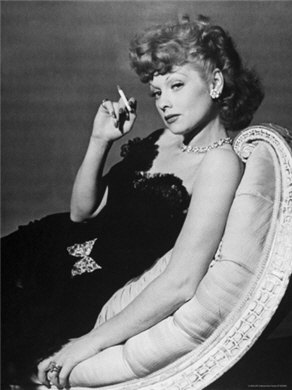

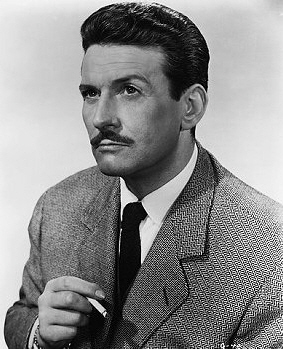
Women use the cigarette as a social display to open the body and display the wrist; men close their bodies when they smoke and prefer secretive holds
Men will often use the Pinch Hold when smoking, especially if they are trying to be secretive, keeping the cigarette hidden inside the palm. This gesture is commonly used in the movies by actors who play tough guys or who are acting sneaky or suspicious.
Smoking as a Sexual Display
Films and media advertising have generally in the past portrayed smoking as sexy. Smoking is another opportunity to emphasize our sex differences: it allows a woman to use wrist displays (discussed in a subsequent section) and open her body to a man and it allows the cigarette to be used like a small phallus being seductively sucked between her lips. A man can highlight his masculinity by holding the cigarette secretively and seductively. Previous generations used a seductive smoking ritual as an acceptable form of courtship with a man offering to light a woman's cigarette while she touched his hand and held his gaze longer than usual as she thanked him. In many places today, however, smoking is considered declasse or in general decline due to restrictive regulations so the smoking courtship ritual is virtually dead. The key to the perceived female sexual attraction behind smoking is the submissive attitude it implies; in other words, it carries the subtle message that a woman who smokes can be persuaded to do things that are not in her best interests. While blowing smoke in a person's face is unacceptable everywhere, in Syria it's seen as a sexual invitation when a man does it to a woman!
How to Spot a Positive or Negative Decision
Whether a person has a positive or negative attitude towards his circumstances is revealed by the direction in which his smoke is exhaled, whether it's up or down. We are assuming here that the smoker is not blowing the smoke upwards to avoid offending others and that he could have blown the smoke in either direction. A person who is feeling positive superior or confident about what he sees or hears will blow the smoke in an upward direction most of the time. Conversely, a person in a negative, secretive or suspicious frame of mind will blow the smoke down most of the time. Blowing down and from the corner of the mouth indicates an even more negative or secretive attitude.
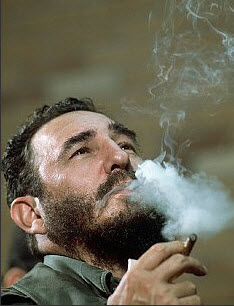

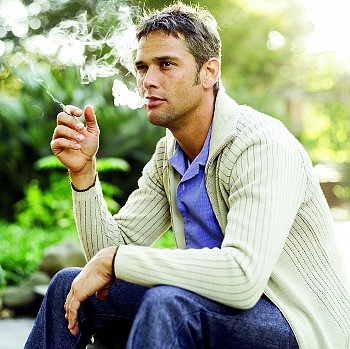
Smoke blown up: confident, superior, positive; smoke blown down: negative, secretive, suspicious
In films, the leader of a motorcycle gang or criminal syndicate is usually portrayed as a tough, aggressive man who, as he smokes, tilts his head back sharply and with controlled precision blows the smoke towards the ceiling to demonstrate his superiority to the rest of the gang. In contrast, Humphrey Bogart was often cast as a gangster or tough guy who held his cigarette inverted in his hand and blew the smoke down from the corner of his mouth as he planned a jailbreak or other devious activity. There also appears to be a relationship between how positive or negative the person feels and the speed at which he exhales the smoke. The faster the smoke is blown upwards the more superior or confident; the faster it is blown down, the more negative he feels.
If a smoker is playing cards and is dealt a good hand, he is likely to blow the smoke upwards, whereas a poor hand may cause him to blow it downwards. While some card players use a 'poker face' when playing cards as a way of not showing any body signals that may give them away, other players like to be actors and use misleading body language to lull the other players into a false sense of security. If, for example, a poker player was dealt four of a kind and he wanted to bluff the other players, he could throw the cards face down on the table in disgust, curse, cross his arms and put on a non-verbal display indicating he'd been dealt a poor hand. But then he quietly sits back and draws on his cigarette and blows the smoke upwards. And then he Steeples. It would be unwise for the other players to now bet on the next hand, as they would probably be beaten. Observation of smoking gestures in selling situations shows that when smokers are asked to buy, those who have already reached a positive decision blow the smoke upwards, whereas those who have decided not to buy, blow downwards.
A study of smokers carried out in the 1980's revealed that smokers took significantly longer to reach a decision in a negotiation than non-smokers and that the smoking ritual is performed most often during the tense moments of the negotiations. Smokers, it seems, are able to stall decision-making by diverting their attention to the smoking process. So if you want quicker decisions from smokers, negotiate in a room that displays a large 'No Smoking' sign.
Cigar Smokers
Cigars have always been used as a means of displaying superiority because of their cost and size. The big-time business executive, the gang leader and those in high-status positions are often portrayed as smoking cigars. Cigars are used to celebrate a victory or achievement such as the birth of a baby, a wedding, clinching a business deal or winning the lottery. It is not surprising that most of the smoke exhaled by cigar smokers is blown upwards. At a celebration dinner where cigars were distributed freely we noted that of 400 recorded cigar smoke exhalations, 320 were in an upward direction.
How Smokers End a Session
Most smokers smoke their cigarette down to a certain length before extinguishing it in an ashtray. Women tend to slowly stub the cigarette out while men are likely to crush it with the thumb. If the smoker lights a cigarette and suddenly extinguishes it earlier than he normally would, he has signalled his decision to terminate the conversation. Watching for this termination signal can allow you to take control or to close the conversation, making it appear that it was your idea to end things.
Summary
Regardless of what type of object or thing we choose to handle, wear or smoke, there are special signals and rituals we display without awareness. The more of these objects we use, the more we signal our intentions or emotions. Learning how to read these signals gives you a second set of body language cues to observe.



